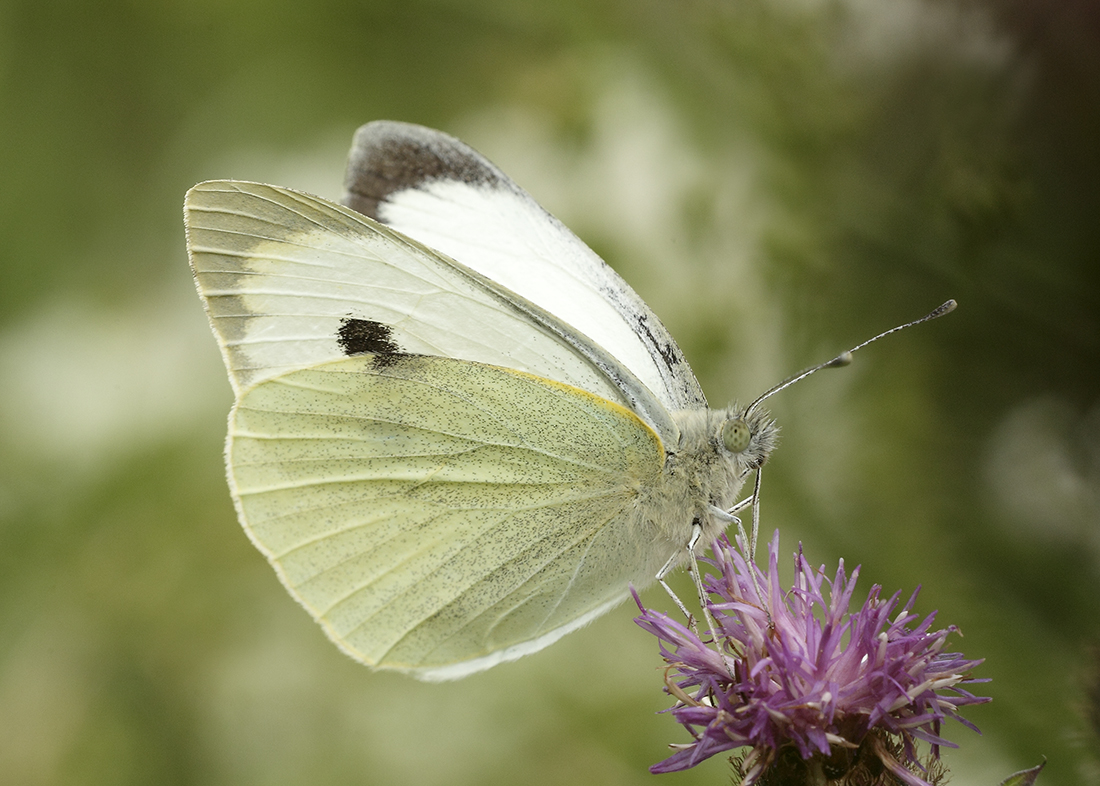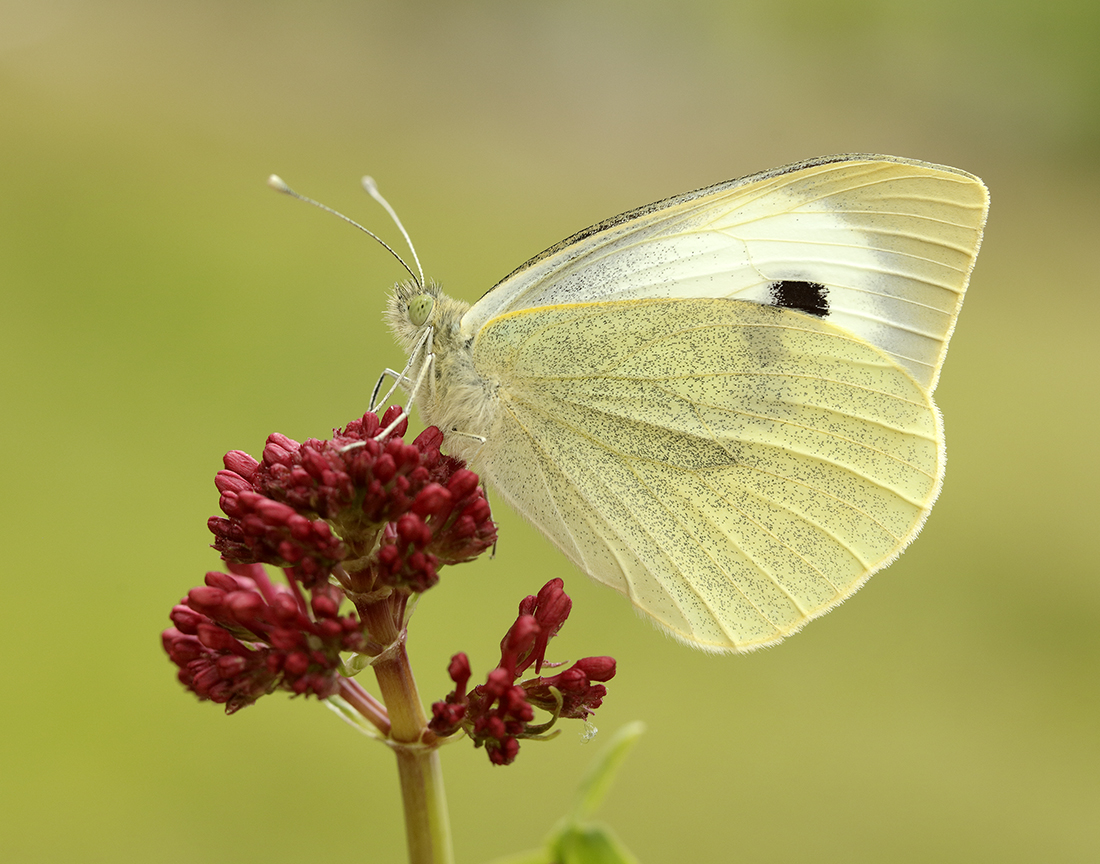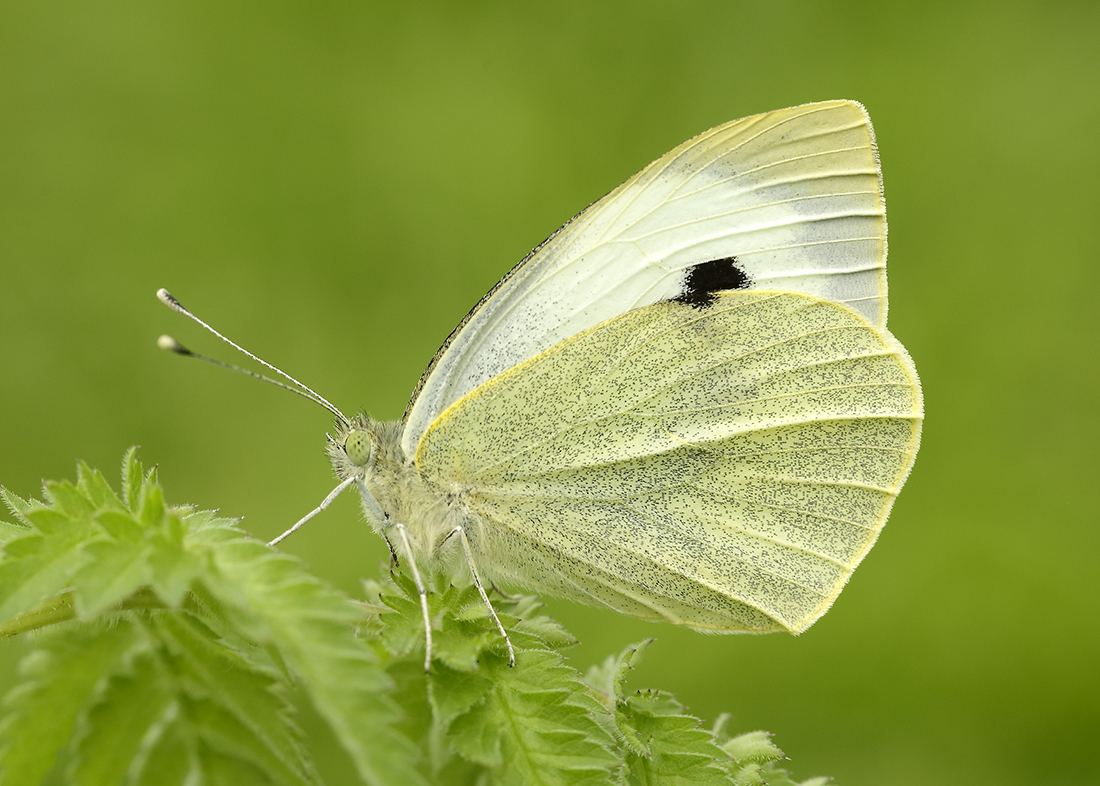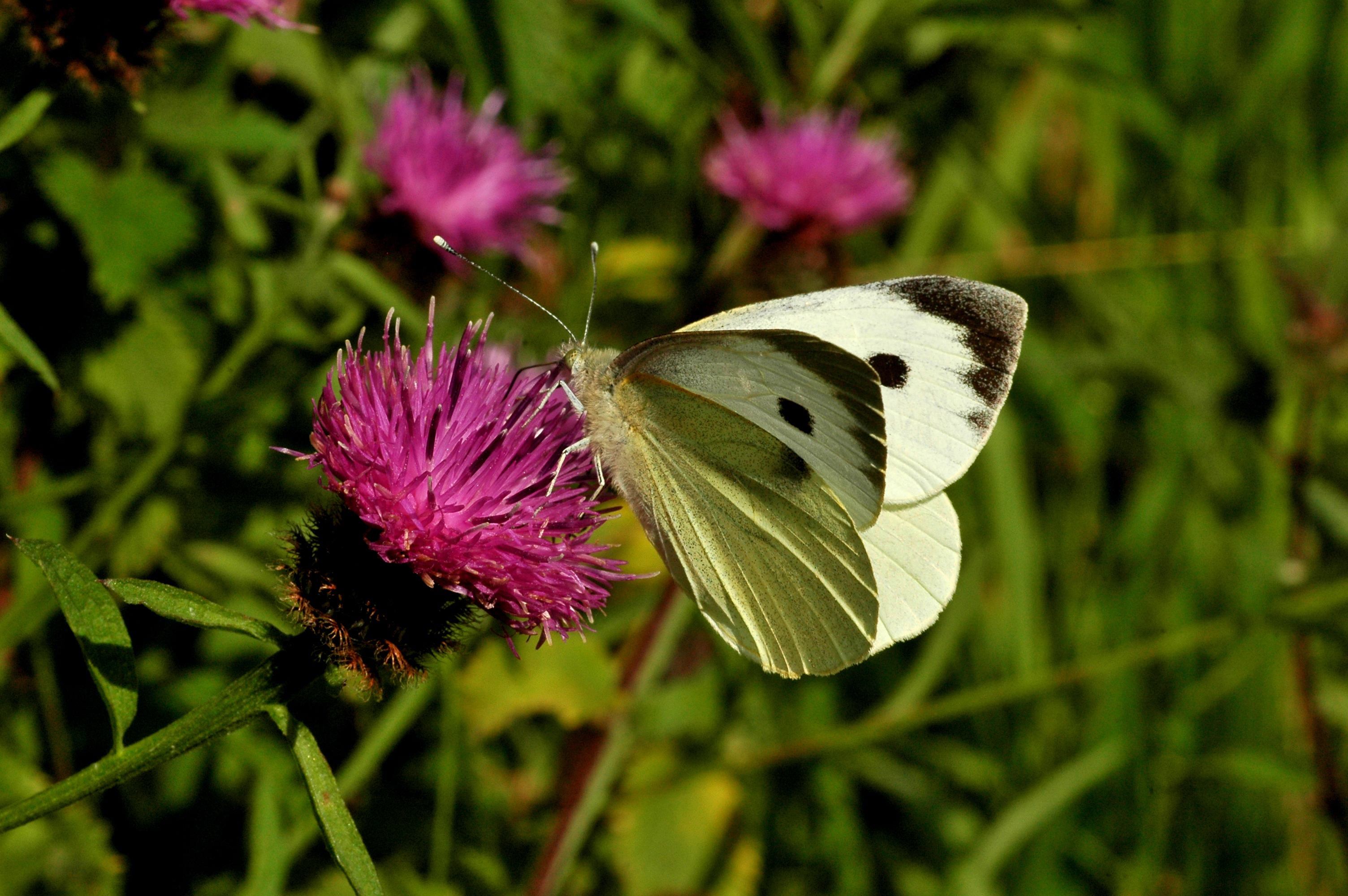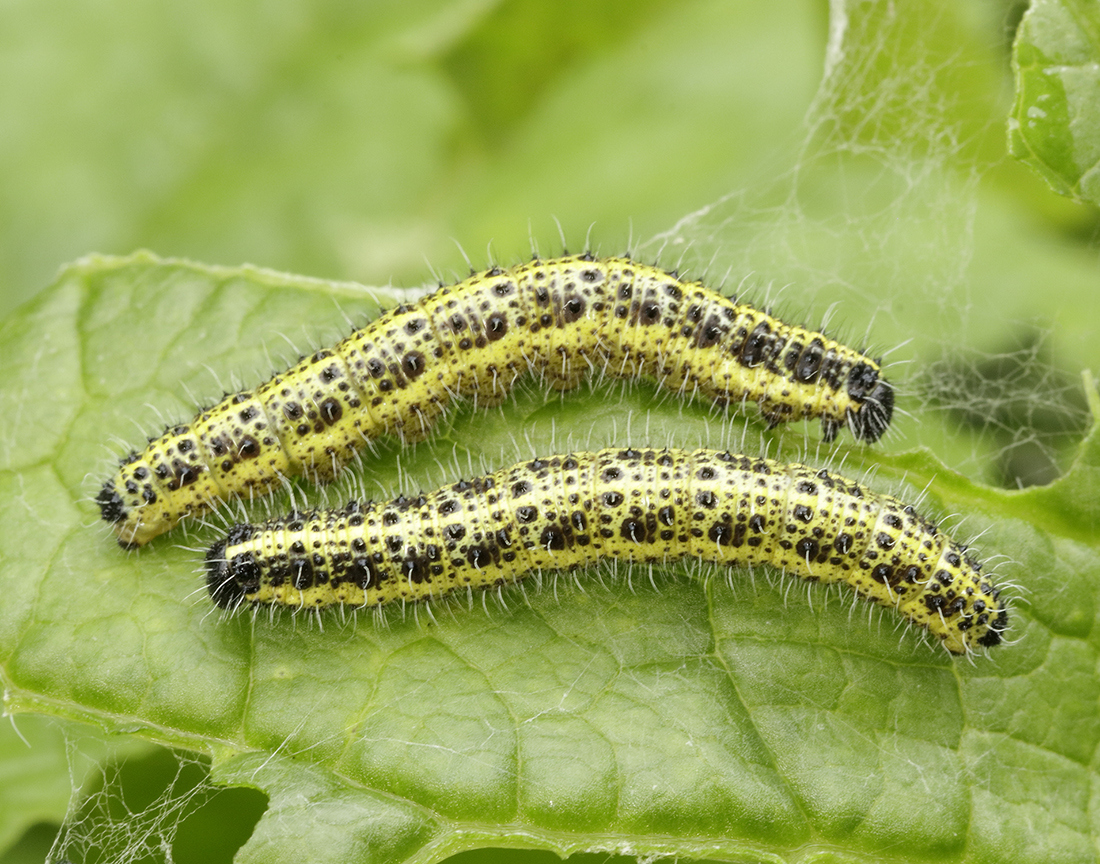Before humans domesticated wild Brassicas to produce our cabbage crops, the Large and Small Whites were probably far less common, confined to using native Brassicas which can grow in abundance around the coast.
Although numbers on monitored sites seem to be steady in parts of the country there has been a reduction in the Large White’s range since the 1970s, due perhaps to the use of pesticides.
Identification
This is our largest white butterfly and a strong flier. The Large White, together with the Small White, is sometimes called a ‘Cabbage White’ as their caterpillars can devastate cabbages and other Brassicas such as broccoli and cauliflowers. The Large White can be distinguished from the Small White by its more powerful flight, larger size, darker black wing tips which extend further down the wing edge, and darker, larger spots.
The Large White lays its eggs in batches and the communal, multicoloured caterpillars are quite easy to spot, whereas the eggs of the Small White are laid singly and the caterpillars are green.
Life cycle & flight period
The Large White has two generations a year, the adults peaking in mid-May and again – often boosted by migrants from the south – in mid to late August. Overwinters as a pupa.
Larval foodplant
The primary larval foodplant is the Cabbage family (Brassicaceae). Nasturtium. Sea-kale and Wild Mignonette are also used. Large White caterpillars are able to use mustard oils derived from their Brassica foodplants as a chemical defence by storing them in their bodies, thereby becoming toxic to some predators.
Habitats
Away from the coast Large and Small Whites are mostly encountered around settlements and arable farmland and are less often seen in the uplands.



